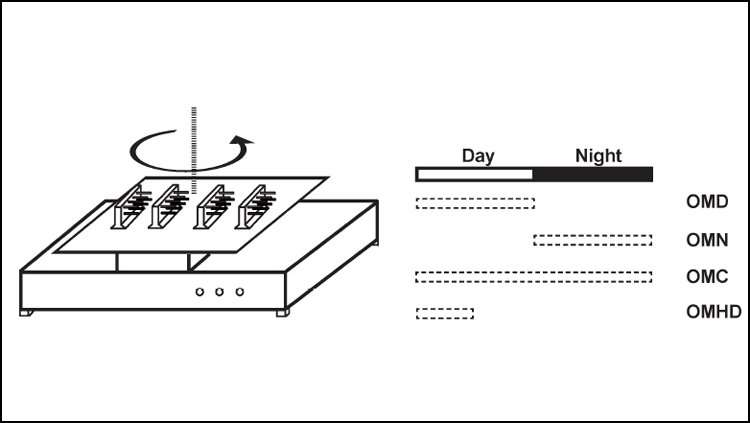Why Motion Makes You Sleepy: Insights from Fruit Flies
By
Society for Neuroscience

Experimental setup and design. Credit: Lone et al., JNeurosci 2021
Long car rides make people drowsy, rocking soothes fussy babies to sleep, and
even fruit flies doze off while spinning in slow circles. While the mechanism
behind motion-induced sleep in humans remains unclear, new research published
in The Journal of Neuroscience suggests it depends on motion-sensitive
neurons in sensory organs—at least in fruit flies.
In their study, Lone et al. monitored the sleep patterns of
fruit flies
while they were rotated in circles on a shaker. They conducted experiments
during both day and night on multiple genetic strains of flies. Slow
rotational movements increased daytime sleep in both male and female flies,
and this effect persisted even in flies lacking key circadian clock
genes—suggesting the process is independent of the time of day.
The researchers also examined the role of nanchung receptors, ion channels
found in sensory organs that respond to vibrations,
motion, and
mechanical sensations. They found that motion-induced sleep was significantly
reduced in flies lacking nanchung-expressing neurons, and even more so when
these neurons were physically removed. This suggests that a similar mechanism
may exist in humans, possibly involving vibration-sensitive cells in the inner
ear.
